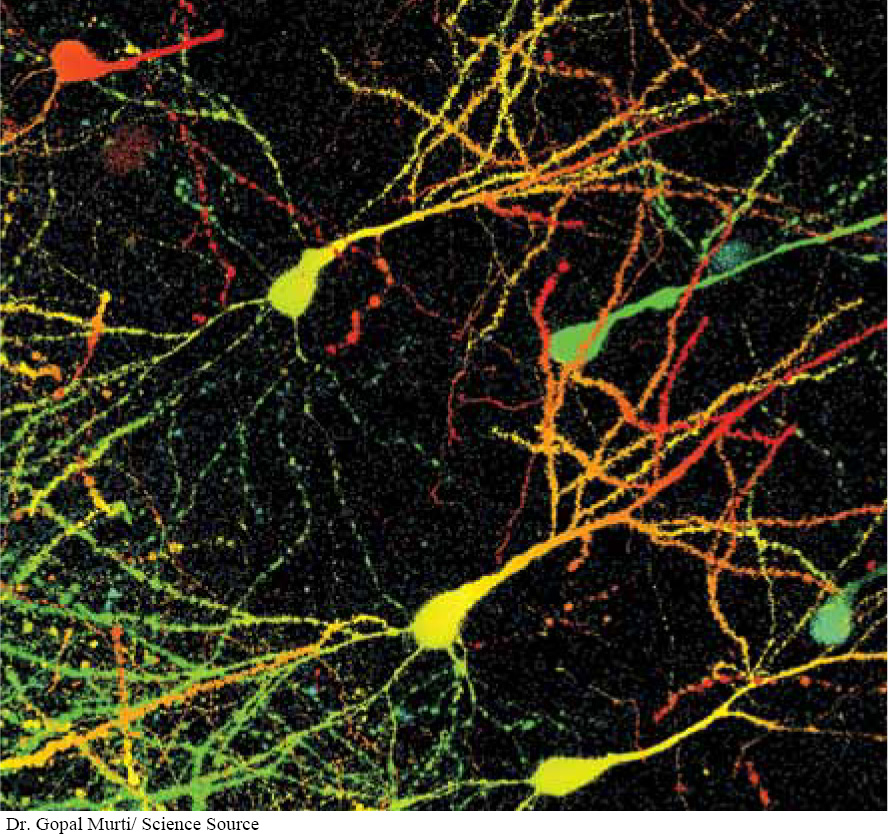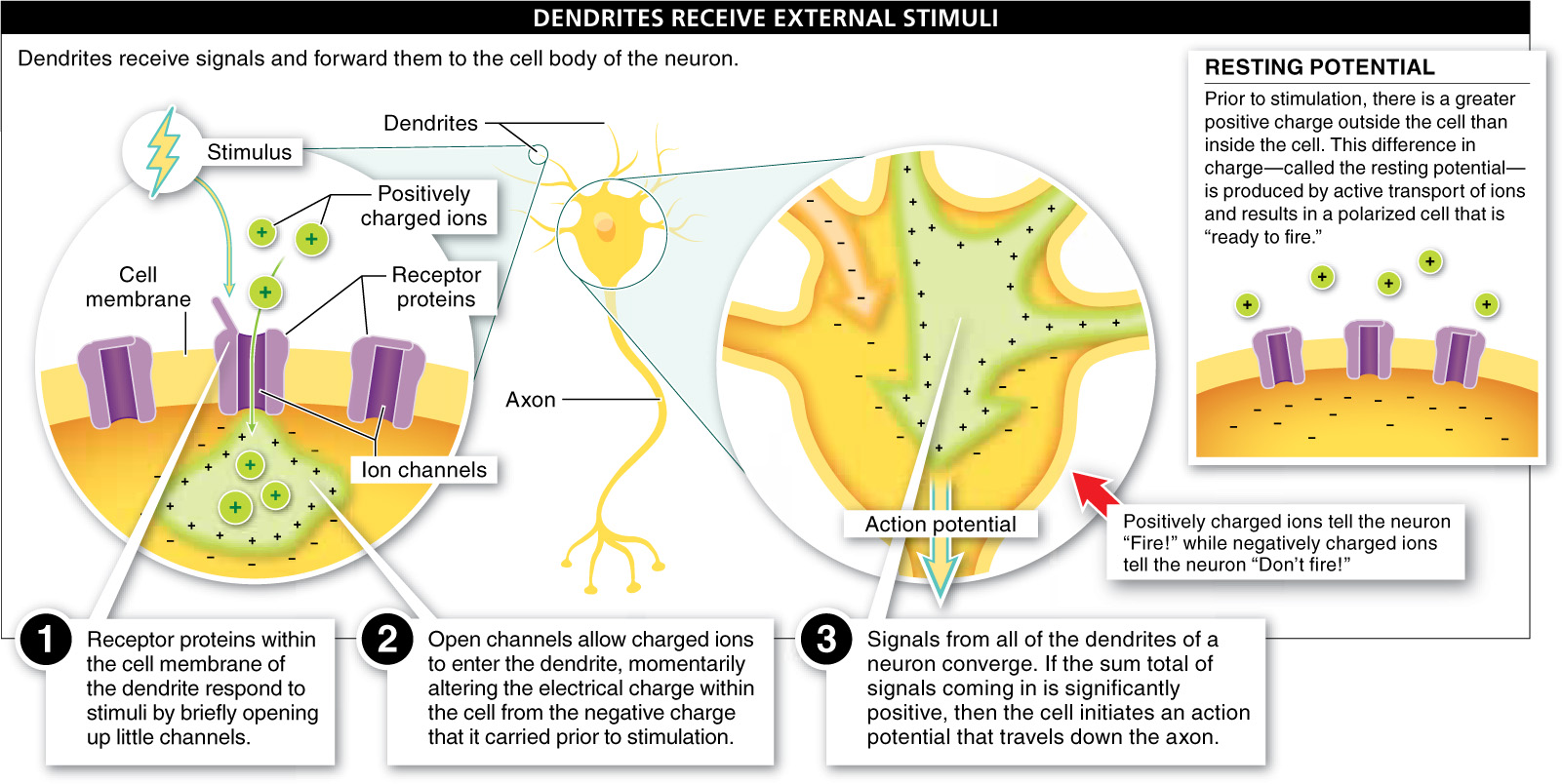
“Fire!” “Don’t fire!” “Fire!” “Don’t fire!” Dendrites are on the receiving end of an almost constant barrage of (sometimes conflicting) signals. A neuron may have hundreds or even thousands of dendrites, which give it a huge amount of surface area over which to make connections with other neurons and receive signals.
Dendrites receive stimuli in one of two ways. Those on motor neurons and interneurons generally connect with and receive signals from other neurons. Sensory neuron dendrites, on the other hand, are modified to respond to a specific external stimulus such as a touch or sound, light, or a chemical (FIGURE 23-8).

When a neuron is not transmitting a signal, the inside of the cell has a negative charge relative to the outside of the cell. This difference in charge, referred to as a membrane potential, is the neuron’s resting potential. The resting potential is produced as proteins within the plasma membrane of the neuron pump sodium ions (Na+) out of the cell and potassium ions (K+) into the cell. Three sodium ions are pumped out of the cell for each two potassium ions moved in, contributing to establishment of a greater positive charge outside the cell than inside the cell. The cell is described as “polarized” and can be thought of as “ready to fire.”
On stimulation, receptors within the cell membrane of the dendrite respond by briefly opening up ion channels (usually the sodium channels). These channels, made from proteins, allow the passage of charged ions (usually sodium ions) down their concentration gradient. This ion flow momentarily alters the negative electrical charge inside the cell—
“The trees grew heavy with blackbirds, branches like dendrites of the nervous system fattening, deep in twittering nerve dusk, waiting for some important message.”
— THOMAS PYNCHON, Gravity’s Rainbow, 1973
As stimuli cause channels to open in the dendrites of a neuron—
925
TAKE-HOME MESSAGE 23.4
Dendrites receive external stimuli in one of two ways. Dendrites on motor neurons and interneurons generally connect with and receive signals from other neurons, whereas sensory neuron dendrites are modified to respond to a specific external stimulus such as a touch or sound, light, or a chemical.
Describe the process by which a sensory neuron dendrite responds to a stimulus and produces a signal that is sent to the cell body.
Receptor proteins in the dendrite's cell membrane respond to the stimulus by opening up certain ion channels. When the charged ions move through these channels, they momentarily alter the electrical signal within the cell relative to its initial value. When the cell's interior becomes more negatively charged, this creates a “don't fire” signal; when the cell's interior becomes more positively charged, this creates a “fire” signal. The signal travels down the dendrite to the cell body, where signals from multiple dendrites converge. If the sum total of these signals is sufficiently positive, the neuron creates an action potential, which is an electrical signal that travels down its axon.